The software domain is a very dynamic area where technologies, concepts and strategies are changing rapidly. A software tester must always stay in touch with the latest trends and, therefore, having access to the newest information I consider a must for working in this area. You can find various resources like articles, books, blog posts, online forums, tutorials and you can participate to webinars and workshops on many topics. Attending conferences and joining software testing communities is the best way to meet people, share ideas and get in touch with everything is new in software. Worldwide there are many events where people present their work in the field of software testing and EuroSTAR is one of the greatest events. At EuroSTAR you will find hands-on tutorials, great presentations made by experienced people involved in software testing activities, interesting topics and guidelines, communities and places to interact and share ideas with participants, social events and expo area for getting in touch with the latest tools available on the market.
EuroSTAR and TEST Huddle
EuroSTAR is not just a conference; it is also a large community. While attending the conference last year in Dublin I have discovered the TEST Huddle, an online platform where testers can discuss on any software testing topic, access resources like books, articles or blogs and find upcoming events like conferences or webinars. I have joined the online community and found there numerous interesting topics. It is a good place to share information about testing and I have started to be involved in many conversations. The members have a lot of experience and a high level of knowledge regarding testing activities. There are many topics including automation, methodologies, tools, agile and so on.
Community Huddle
This year at EuroSTAR I have joined the Community Huddle team and I have written daily updates on TEST Huddle forum from the conference. It was a pleasure to meet the team members and get in touch with people from the TEST Huddle community. This is what Community Huddle means: a good way to interact with people, discuss and share knowledge. During the conference, many activities were organised by the team like Soapbox sessions (a raised platform where you can stand and make a speech on a topic you want), Test Coffee (have a early morning coffee and discuss different topics in testing), First Time Attendee Network (a sessions for those who are attending the conference for the first time and want to know more information from seasoned veterans about the events, presentations and everything else) and Open Space (specially made for attendees to create their own timetable).
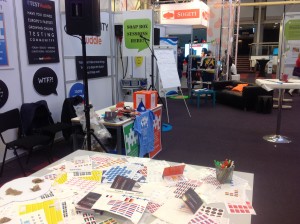
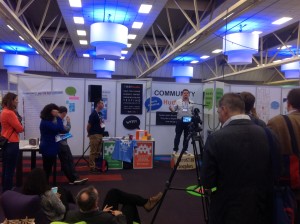
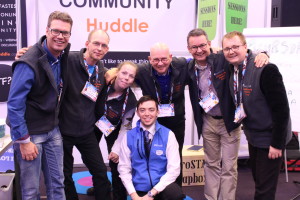
The location in 2015
EuroSTAR is the premier and largest gathering of European software testing professionals. It takes place every year since 1993 in different cities including London, Dublin, Edinburgh, Munich, Stockholm, Amsterdam or Brussels. In 2015 EuroSTAR was held in Maastricht, the Netherlands. The venue was the MECC (Maastrichts Expositie en Congres Centrum) Maastricht. Maastricht is a historical city, one of the oldest cities in the Netherlands and the birthplace of the European Union. The city has various universities and research institutes. Located close to Germany and Belgium, Maastricht is a very nice place with a pleasant atmosphere.
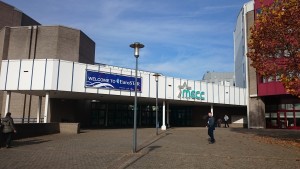
Social events
At EuroSTAR, social events are always organized at the end of the day. On Tuesday there was the Community Dinner and on Wednesday the Conference Awards Dinner. I have attended the Community Dinner which was organised at a wonderful castle called Château Neercanne, a place full of history including the Maastricht Treaty. It was a special atmosphere and a good opportunity to talk to people and share ideas. Everything was perfect!

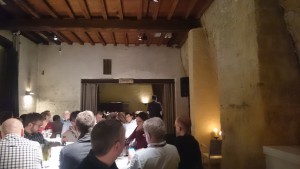
The EuroSTAR conference
When searching for the main events held in Europe, EuroSTAR has very interesting topics. The agenda always includes the most relevant topics presented by well known and experienced speakers from around the world. What also makes it great is the focus on interaction between people and knowledge sharing because there are a lot places and times to get in touch with others. Attending the conference is definitely a great experience!
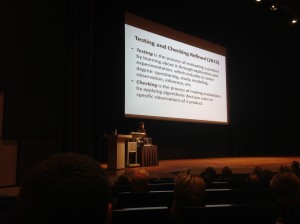
The first day and the half of the second day were reserved for tutorials. Half of the second day and the following 2 days were for the conference. I was there for the main conference with three days of sessions to attend. There were keynotes held in the main auditorium followed by parallel presentation sessions which you could attend. You could choose between 4 different topics. The fact that you could see a short preview of all the topics on the conference website was very welcome. Furthermore, each topic had near its title a category displayed like automation, agile, mobile, management or skills. At the beginning of each day, the programme chair Ruud Teunissen presented us briefly what was called “Ruud’s roadmap”, a road map to help participants decide which sessions to attend. For example, if you were interested in technical aspects than the automation would have been a good option, mobile for those interested in the mobile area and management for those who wanted to get information regarding test management. Before each keynote in the auditorium, Ruud introduced the topic and its speaker and welcomed the speaker on stage. This is a wonderful way to organise the conference and it proves why EuroSTAR is such a great event! There were plenty of breaks for discussions between participants and speakers. An expo area for companies was also organised. There, you could interact both with companies that offer software testing services and with companies that develop software testing tools. Like last year, there was a testing lab available for testing your skills and social activities.
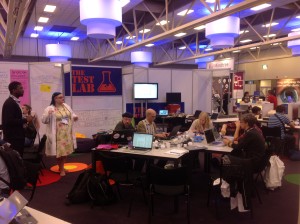
In the end, at the closing ceremony Ruud presented a summary of the 2015 edition and all the Test Lab crew went on stage to present the results of the Test Lab activities. He concluded the 2015 event by welcoming on stage the programme chair (Shmuel Gershon) for the next EuroSTAR conference will take place in Stockholm, Sweden in November 2016.
The topics
It was not an easy job to decide which sessions to attend. I have selected some presentations and tried to cover various topics like automation, management, skills and test strategy. All of them were interesting. I will further describe some of them which I liked very much.
TRENDZ 2030 presented by Richard van Hooijdonk (Netherlands): Richard gave us an insight on how the technology is rapidly changing and the impact on our life. Some of the human work will be replaced by robots. In the context of disruptive technologies there will be many changes; new technologies will replace the existing ones. As an example we can think about the printed photo industry that is currently replaced by the digital photo made by smartphones or tablets and quickly shared with others on social networks. Internet of things will play also an important role and more systems and technologies will be interconnected. But the most important thing for a tester is to keep up with technology and to be able to adapt and change to everything is new. Skill sets require a need for change every 5 years, and, therefore learning is a continuous process. Small is the new big; small companies providing outsourcing services are the new trend and these companies must rapidly adapt and change to be able to keep up with the industry.
Mutation Testing – Better Software Through Automated Defect presented by Seb Rose (UK): Seb presented to us some aspects about mutation testing. Coverage does not provide information about quality. Mutation means a deliberate introduction of a bug by changing the code under test. After running the test suite, if any test fails, the mutant has been killed. If no test fails, the mutant has survived and a manually check should be performed. Seb also presented PI test, a useful Java based tool for mutation testing.
Test Automation: The DevOps Achilles Heel presented by Jeffery Payne (USA): Jeffery made on overview of 2 concepts: Continuous Integration (CI) and Continuous Delivery (CD). In CI one of the goals is to “fail fast” if there are problems regarding the application, environments or tests. Test automation makes this “fail fast” principle possible and ROI for DevOps relies on automation. In DevOps everything is treated as code: tests, environment configurations, build scripts etc. CI and CD testing forces collaboration and builds are the ‘quality police’ when test automation is used.
Champions League Test Automation – Our 11 Key Players presented by Matthias Ratert and Manuel Meiners (Germany) was one of my favorite presentations. Matthias and Manual compared the automation with football. They described the test automation activities like football, which include teams, roles of each player inside the team and strategies. In “defense” there should be people with an overview of the domain, a vision where to go and good archive with test results for traceability. “Defensive midfield” should be based on debugging. This means to log as much as possible, re-run failed tests to get more data and analyze logs. In “attacking midfield” the strategy should be based on target oriented test runs (versions, platforms, languages etc.) and purposes (smoke tests, regression tests etc.). A “striker” means promotion including definition of realistic targets and expressing yourself and getting recognition and appreciation. Of course, the team has also opponents like time, late start, trying to take big steps or having confidence just on the tool.
The 2015 Survival Guide: Lessons for Testing in the Wild presented by Julie Gardiner (UK) won the best presentation award. It was great to attend again a session made by Julie after attending her presentation last year in Dublin. She described 5 important aspects that must be taken into consideration regarding testing. The first thing is enabling the quality by reducing costs and the number of bugs found by customers and increasing the happiness of the customers as well as the efficiency, effectiveness and communication. A second one should be to stand out by having passion for testing including constant learning, find new opportunities and motivations. The next one should be to stand out by taking ownership of your career which includes learning/self-learning activities, finding a mentor and creating a plan based on where and how do you want to go. Another aspect is to demonstrate and report the value of testing by presenting how much was saved by doing testing, showing test effectiveness and describe risks especially on the business side. It is also important to retain integrity and carefully choose battles because there are battles that worth fighting but others may not be worth fighting.

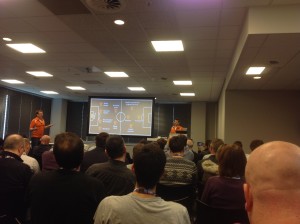
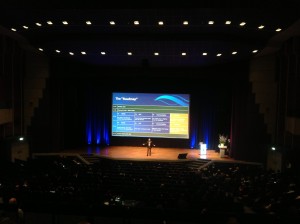
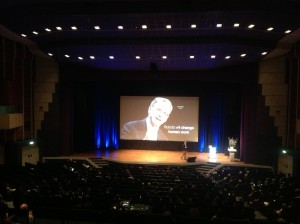
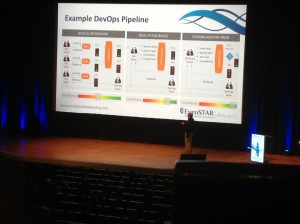
Final thoughts
EuroSTAR is one of the most important events in the software industry in Europe and a perfectly organized gathering of the best professionals in the domain. It was a great experience to attend the conference.
Thank you EuroSTAR for organizing this great event!
Cheers,
Alin
